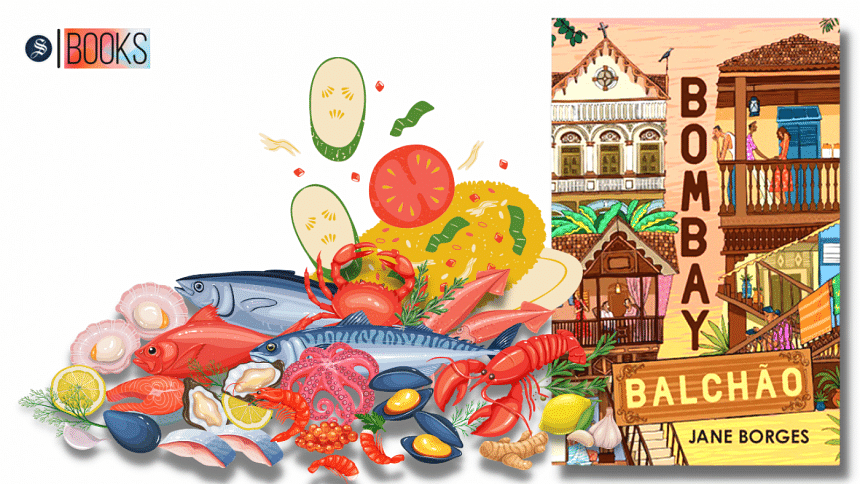Jane Borges’ 'Bombay Balchão' is a crafty explosion of flavour

Raised in a household that liked to adhere to a 'safe' level of flavour and pungency, I was a little late to the shutki and bhorta game. While I remain picky about my dried and fermented fish as well as the mashed condiments, I remember the explosion of fireworks on my palate the first time I tried balachaw, and till date, it remains a flavourful go-to whenever I need a little pep on my plate.
It was perhaps my stomach that led me to pick up Bombay Balchão (Tranquebar, 2019) during Bookworm Bangladesh's clearance sales, although I had never heard of Jane Borges before. The feeling of reading it was no less impactful than that first taste of balachaw.
Set in the neighbourhood of Cavel in South Mumbai, home to a vibrant Catholic community, this book weaves a sweeping saga around the lives of some six families. Just like the balachaw which looks like a mass of crispy brown relish at first glance, but on closer examination reveals browned onions, toasted garlic and deep-fried fish or shrimp parts, a closer look at the community reveals Goans, Mangaloreans, indigenous Mumbaian convertees and all their friendships, flirtations, petty rivalries that make up an incredibly vibrant canvas. The characters crackle with life, quirky and contradictory, despicable and sympathetic in turns, and because Borges hails from a community similar to the one she portrays in this novel, she is able to steer clear of stereotypes of the Portuguese Catholic community in South Mumbai, while at the same time, create context for why some of these stereotypes exist in popular culture.
The structure of the book is worth talking about. To begin with, the narrative is non-linear, jumping back and forth between decades, using the character of Michael Coutinho as a sort of landmark to re-orient the reader whenever there is a shift in the timeline or perspective. Each chapter is a self-contained short story, which, like a modern-day Scherezade, Borges cuts off right at the climax, before the Big Event (Death? Marriage? Disaster?) happens. How does the story of Chapter X end? You'll find the answer as an aside in maybe Chapter Y or Z. It takes a little getting used to but when you do, as an engaged reader, it becomes a fun mental exercise.
But there's more to this than artifice; there's a line regarding two of the characters that says "they forgot they were characters in a novel, not a short story" that creates a foreshadowing about the ripple effects of impulsive choices and pivotal decisions. Borges knows exactly what she is doing and never loses control.
The prose is frothy, hyperbolic, teetering between slapstick and dark humour at times, but manages to go to some intense areas, from colonialism to race relations, from domestic abuse to censorship during the Emergency. Jane Borges infuses her natural instinct for reportage, drawn from her journalistic background, with that tender touch of nostalgia, drawn from memories of growing up in a neighbourhood and community similar to Caval. For a novel as tiny as this one (Bombay Balchão numbers at 250 pages), there is a lot to love.
Sabrina Fatma Ahmad is a writer, journalist, and the founder of Sehri Tales annual creativity challenge.

 For all latest news, follow The Daily Star's Google News channel.
For all latest news, follow The Daily Star's Google News channel. 







Comments